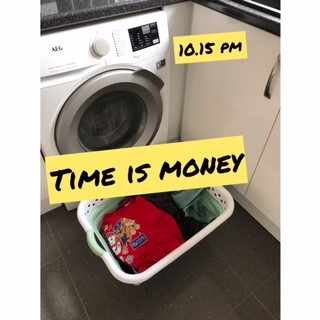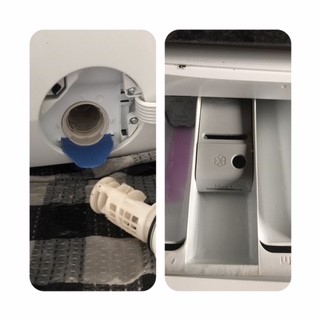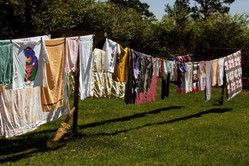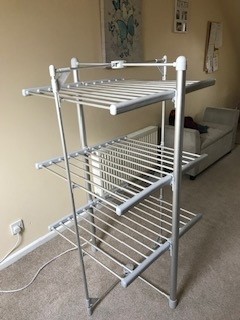
Washing machines can wash away £s!
With an upcoming rise of 54% on average household’s energy bills and further increase expected in October 2022, when the price cap changes again, we are all trying out various ways to budget our energy bills. So I thought I’d share a few tips I’ve read and learnt on keeping energy bills down – including best time to put on a wash!
Do Less Laundry- It saves water, time and energy. On average one wash uses between 30 and 70 litres of water. If you are anything like me I hate leaving the laundry to pile up, especially with my child uniforms filthy every day! But most items can be worn more than once before a wash is needed (except sweaty gym clothes!) ….ask yourself does it really need a washing machine clean or can I just give it a sponge wipe? If not Use Quick Wash – we can use the 15 minute or 30 minute quick wash feature to reduce our wash time(if it’s available in your washing machine and they do vary- mine is 20mins) .

Time It Right– Run your machines late at night or early in the morning. Between 4-7pm is thought to be the most expensive time to wash or dry your clothes, as an increased demand during these hours can make electricity more pricey depending on your tariff. Its worth knowing that energy prices will be at their lowest between 10pm and 5am, so try to use your machines during this time when possible. If your house comes in an area where there is TOU (Time Of Use) plan then check the time when the electricity tariff rates are minimum and do your washing during that time. However, make sure you follow fire safety guidance and never put a load on then head to bed for the night. This timing also applies to your tumble drying cycles too.
Use A Colder Cycle – Washing clothes at colder temperatures for a shorter time can make your machine more energy efficient. For example, a 30-degree cycle can cut your washing machine’s energy use in half, in comparison to a 40- to 60-degree cycle.
It’s also more cost effective to use hot washes for bedding, towels and sportswear which are likely to hold more bacteria. You can save even more by using the eco setting on your washing machine, if you have one. Most have time savers too….so don’t go setting it for 3.5 hours…whos clothes are that dirty!
For drying, a cooler cycle might take longer, but it ends up consuming much lesser energy and you’ll also be less likely to over-dry your clothes – if your clothes come out warm to the touch, they’ve been in for too long.
Use Bio Capsules for more effective stain removal Bio capsules or bio laundry detergent are best suited if you want to wash your clothes at lower temperatures. These products have enzymes that can be activated at lower temperatures so they will be better at breaking down your clothing’s dirt and stains during a colder wash.
However, its also worth noting that non-bio detergents – while not quite as suited for cold washes- have less harsh enzymes which makes it a better choice for sensitive skin.
Go Large- It’s more efficient to do larger loads of laundry, but an overpacked washing machine or dryer may not wash or dry your clothes properly, so you may have to wash some again, defeating the point….. so make sure to fill your machine with a suitable load.
Top Load Tip– ensure that your machine will run as efficiently as possible is to check if you can still touch the top of the basin after filling a washing machine or dryer with your laundry. If you aren’t able to fit your hand among the clothing, this means your machine is packed too full.
Get Unknotted-Something I use to do all the time when in a rush to just get the laundry on…..make sure you’ve untangled your laundry before loading it into a washing machine or dryer, smaller items can get wrapped up in bigger items of clothing, which results in them not getting washed or dried properly. Also if drying duvet covers fasten them up or the small things will end up inside and not dry
Less Is More- Use the right amount of detergent By using the correct amount of laundry detergent, you won’t need to use an extra rinse cycle, and you’ll prevent residue build-up which can eventually lead to blockages and be costly to fix.

Maintain your machines Washing machines do cleans clothes but don’t clean themselves! Clean your machine at least every three months to ensure it works in top condition.You can pour two cups of white vinegar into your machine’s detergent drawer, and run your machine on its hottest cycle. After the first cycle, add half a cup of baking soda directly into the basin and run a hot cycle again.Another option is to run a hot cycle with a limescale removing product. This helps to get rid of any build-up that could affect the performance of your machine. Don’t forget the filter and the trays where mould and stagnant water can build up…and really smell.
For your dryer, regularly clean its lint filter, after each cycle if possible. Accumulated lint and hair – even from one cycle – can hinder your machine from drying properly and it can finish the cycle nearly as wet as it went on…and you will not know til its finished and all that energy and time is wasted!
Develop a habit to use dryers only when sun is not out or there is urgent need to dry your clothes. Air dry when possibleas tumble dryers uses the most energy of all standard household cleaning appliances. So air drying your clothes can definitely help cut down on energy costs and smells fresher too.

Top Tumble Tips– if you switch your loads while the dryer is still warm from a previous cycle you can conserve the remaining heat inside the dryer for your next load of clothes. This will then help shorten your drying time.
- Dryer balls are a good investment Using wool or rubber dryer balls helps separate your clothes and increase their exposure to airflow during a cycle in the dryer. This reduces drying time and the length your dryer needs to run for, saving you energy.
- Wool balls can even soak up some of the moisture in your machine which helps cut down drying time even more.
However, given that we’re still in winter, drying clothes outside may not be an option just yet. Instead, utilise those radiators you have on, preferably with doors closed, to create a small heat vacuum, but be weary of the condensation it may cause. You may want to air the room you use for drying to avoid any condensation and mould build up.

We use this fab money saving energy efficient electric heated airer from Lakeland. It costs just pennies an hour to run and much kinder to clothes than tumble drying and neater and more efficient than laying laundry all over radiators…..especially when you have visitors over!
We are all probably guilty of leaving appliances switch on at the plug or on standby mode so one very simple saver……turn OFF the power to turn ON the savings.








